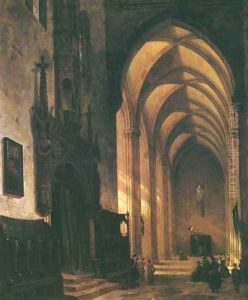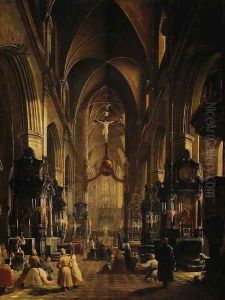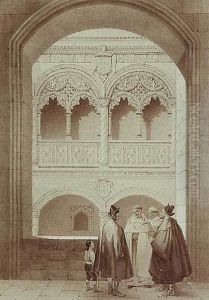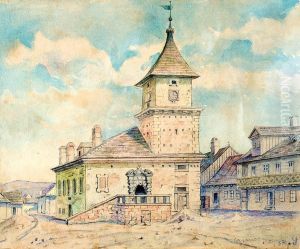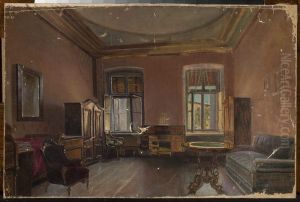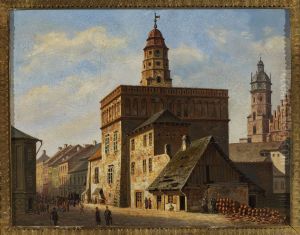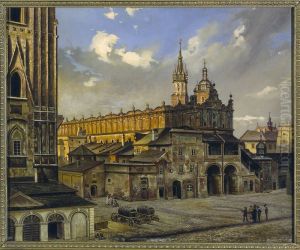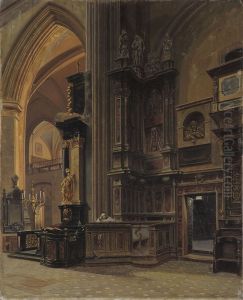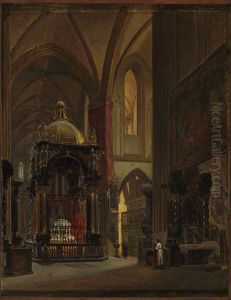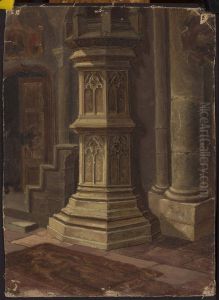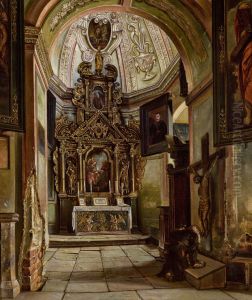Aleksander Gryglewski Paintings
Aleksander Gryglewski was a Polish artist born on November 30, 1833, in Kraków, then part of the Austrian partition of Poland. He is primarily known for his contributions to portraiture and genre painting, capturing the essence of Polish society during the 19th century. His work is characterized by a meticulous attention to detail and a deep sensitivity to the personalities and circumstances of his subjects, which made him a sought-after portraitist among the Polish aristocracy and intellectual elite.
Gryglewski's artistic journey began at the Kraków School of Fine Arts, where he was a student under the guidance of Wojciech Stattler, a prominent Polish painter of the time. His education continued in Vienna and Munich, broadening his artistic perspectives and honing his skills, particularly in the realm of oil painting and drawing. Gryglewski's style was influenced by the European Realist movement, yet he imbued his works with a distinct Polish sensibility, often reflecting the socio-political conditions of Poland under foreign partitions.
Throughout his career, Gryglewski exhibited a profound interest in the lives of ordinary people, which was evident in his genre scenes. These works depicted everyday life with a level of empathy and realism that was uncommon at the time. However, it was his portraits that truly established his reputation. His ability to capture the psychological depth and character of his sitters, from nobles to intellectuals, made his portraits highly valued.
In addition to his painting, Gryglewski was also involved in the restoration of historic artworks, contributing to the preservation of Polish cultural heritage. His dedication to art was evident in his participation in the Kraków Art Society and his role as a teacher at the Kraków School of Fine Arts, where he nurtured the next generation of Polish artists.
Aleksander Gryglewski's life was cut short when he passed away on May 13, 1879, in Kraków. Despite his relatively brief career, his work left a lasting impact on Polish art, offering a window into the nation's culture and history during a turbulent period. Today, Gryglewski's paintings can be found in museums across Poland, cherished for their historical significance and artistic merit.
